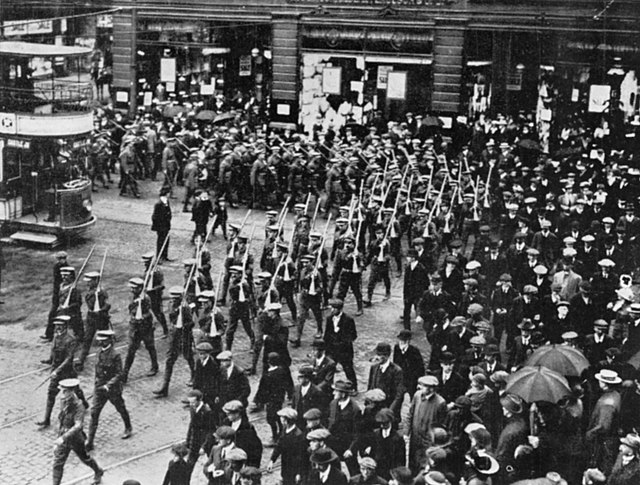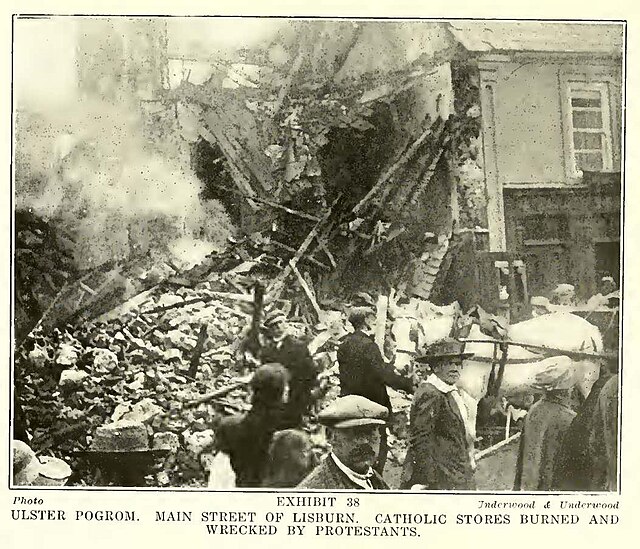Communal violence is a form of violence that is perpetrated across ethnic or communal lines, where the violent parties feel solidarity for their respective groups and victims are chosen based upon group membership. The term includes conflicts, riots and other forms of violence between communities of different religious faith or ethnic origins.
Dhammayietra, an annual peace march in Lampatao, Cambodia at Thailand border against communal violence.
A painting by François Dubois depicting the communal violence in France during the Saint Bartholomew's Day Massacre. Over two months in 1572, Catholics killed tens of thousands of Huguenots in France.
Arson and communal violence of 1946 between Muslims and Jains, in Ahmedabad, Gujarat.
Damage from communal violence between Christian Greeks and Muslim Turks in Cyprus.
The partition of Ireland was the process by which the Government of the United Kingdom of Great Britain and Ireland (UK) divided Ireland into two self-governing polities: Northern Ireland and Southern Ireland. It was enacted on 3 May 1921 under the Government of Ireland Act 1920. The Act intended both territories to remain within the United Kingdom and contained provisions for their eventual reunification. The smaller Northern Ireland was duly created with a devolved government and remained part of the UK. The larger Southern Ireland was not recognised by most of its citizens, who instead recognised the self-declared 32-county Irish Republic. On 6 December 1922 Ireland was partitioned. At that time the territory of Southern Ireland left the UK and became the Irish Free State, now known as the Republic of Ireland.
Ulster Volunteers marching in Belfast, 1914
Catholic-owned businesses destroyed by loyalists in Lisburn, August 1920
Crowds in Belfast for the state opening of the Northern Ireland Parliament on 22 June 1921
Members of the Irish negotiation committee returning to Ireland in December 1921








